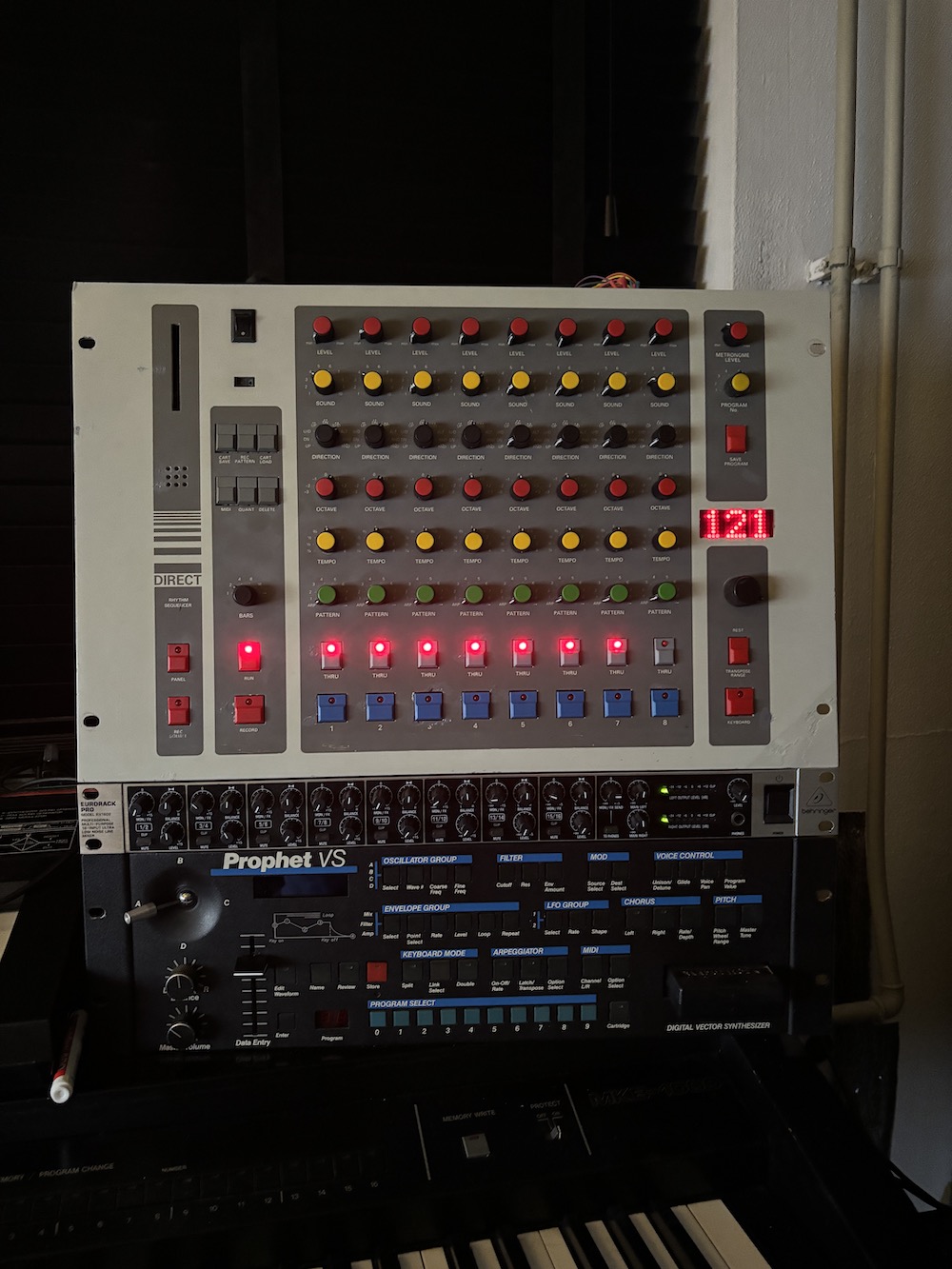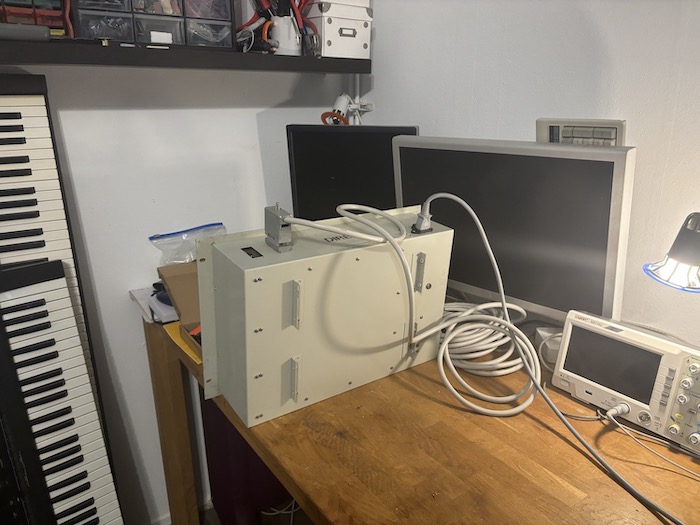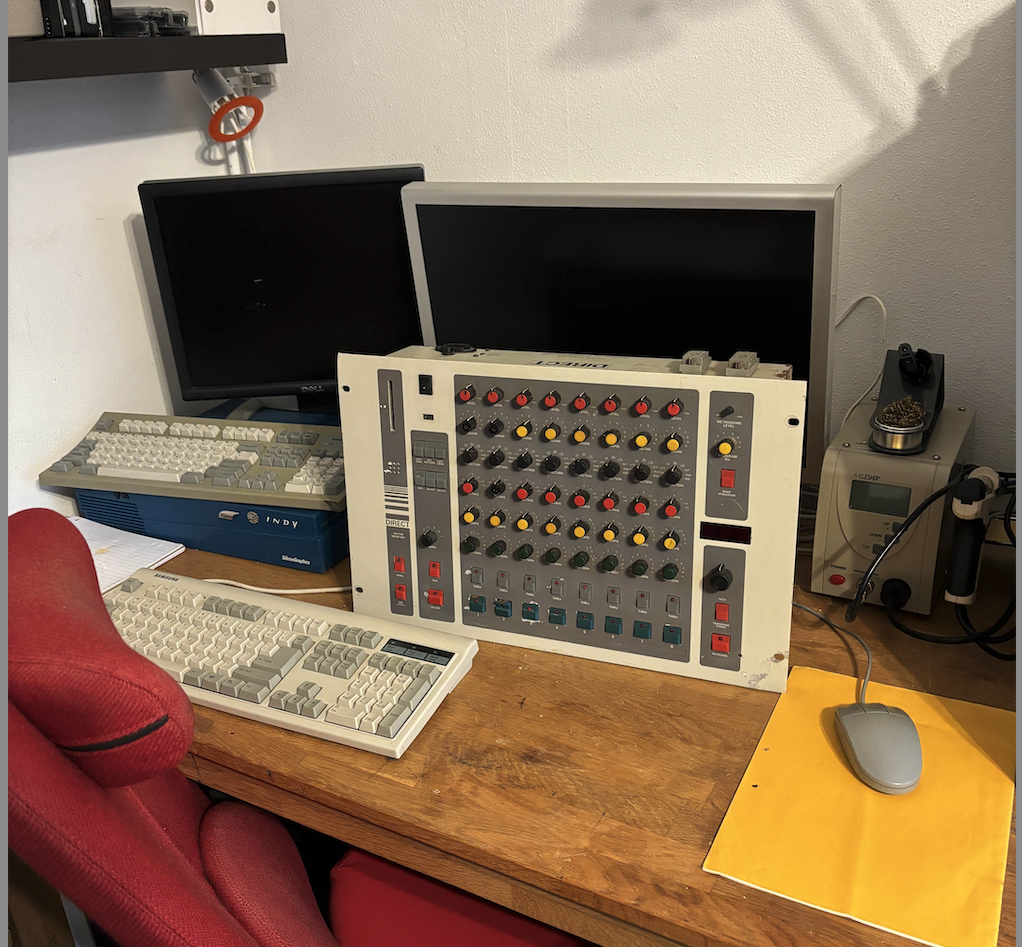
Here starts an important and cool restoration project.
A lot has been said and written in the past about Vangelis custom “Direct” machine – as a result, this particular device has retained a certain ‘mystique’ on what exactly it did.
We’ll probably never fully know for sure as some things like the most recent software version was lost probably forever.
But here is what I can share so far.
In 1987, Vangelis requested a Zyklus MPS-1 machine for concerts. Based on the hype created in various industry magazines, Vangelis took notice and wanted to try one as it would seemingly fit his style of producing which is as most people know, geared towards the least time between conception and execution.
In the late summer of 87 he set out to create the album “Direct”, where the Zyklus got put through it paces. And as fans may know well, during the 87 – 90 period, a LOT of music was made, much unreleased, including fully completed albums, documentary soundtracks, music for commercials etc. We don’t know for sure on which tracks what was used.
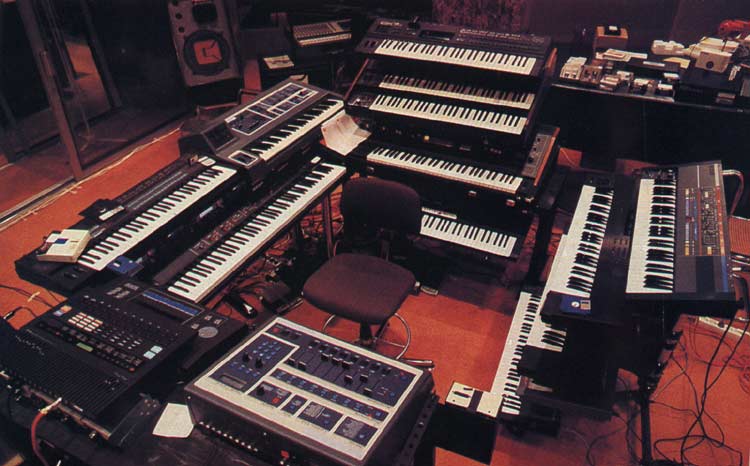
The Zyklus however is not a super intuitive machine to use, especially because you need to prepare sequences beforehand, which goes against Vangelis Improvisational methods. Not to mention that Vangelis didn’t like to do much menu diving at all.
But there were enough features in there for him to talk to the Zyklus Developers and commission a new custom device that would end up being ‘Direct’. The idea was that Direct would control some 8 synthesizers in various ways, without menu diving. Initially, the project was called VRS, Vangelis Rhythm Sequencer. Vangelis dubbed it “Direct”.
Here is where things get complicated. Development of the functionality of Direct went quickly and frequently as ideas progressed and changed on a whim. This meant frequent updates of the software inside the box. To facilitate this, the developers decided that most of the software would live in battery-backed RAM memory. A new version would be brought in on a memory card and with a few button presses, the content of that card would be loaded into the system and presto: a new release is running.
It also meant that when the battery died (which takes many years), the RAM loses its contents and the software is gone. Remember, this is setting in the late 80’s where computer memory was hideously expensive and various forms of nvram or flash ram wasn’t available yet.
Somewhere in 1989 the last release was delivered. At this point an additional hardware device specifically for transposing was already made as well. Although it works in tandem with Direct it could also work stand alone. This is the setup you see in most videos and photo’s of that era and Direct was used on basically everything from that point on, until around 1993 / 1994 (I believe) when Yes Audio / Alyseum System 1 came on the scene (the system with all the cool selector control boxes)
Also, at some point a second Direct box was made. Vangelis had 2 fully functional setups in his Paris Epsilon Laboratory and for concerts, both machines could work in tandem. I believe both had their own transposer module too.
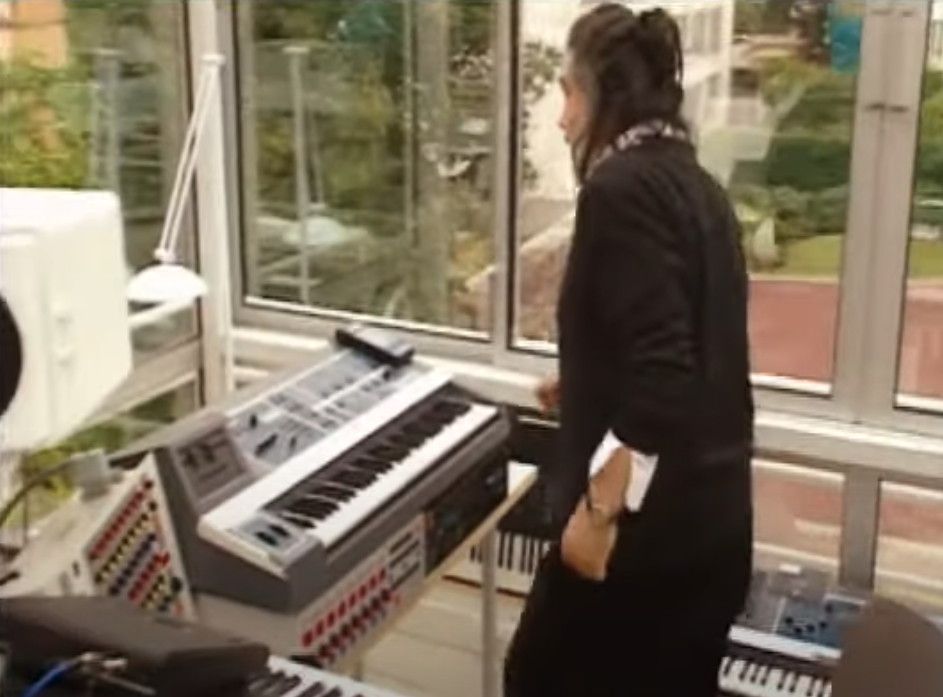
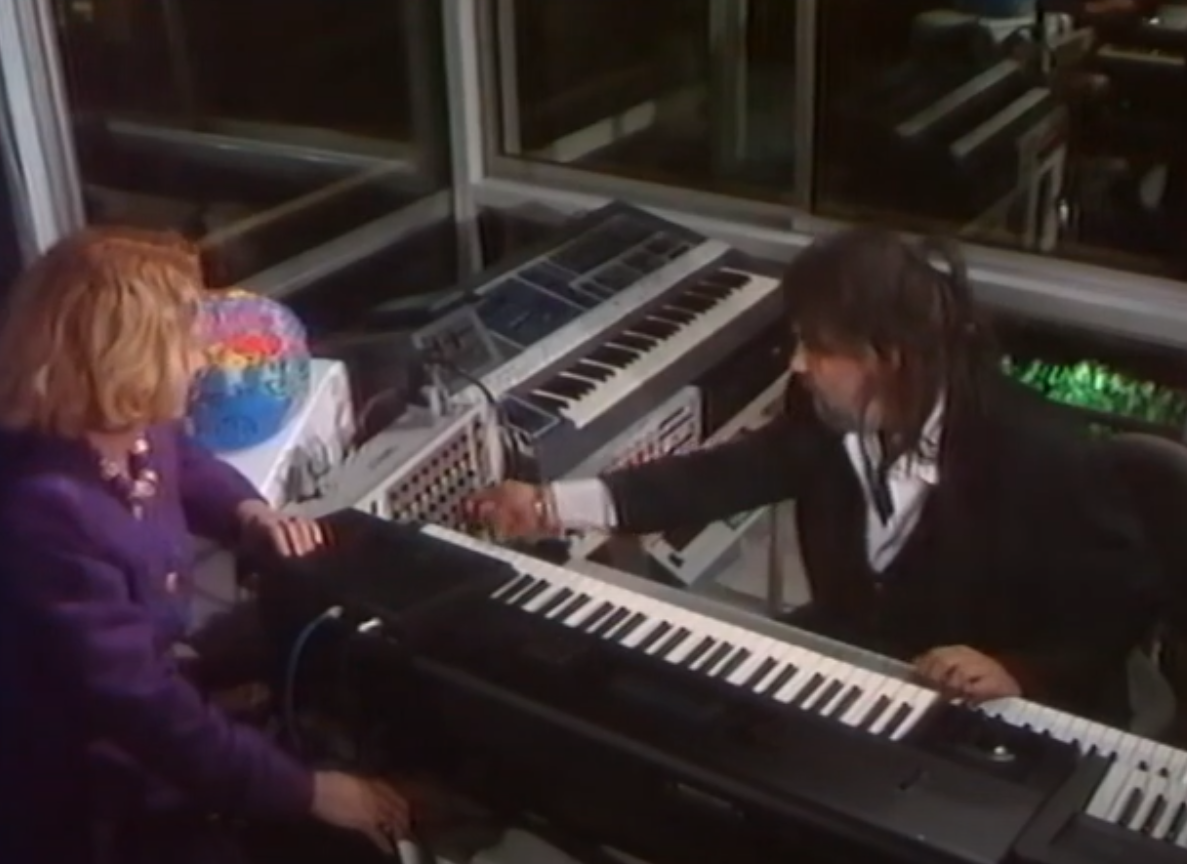
Fast forward to 2007 where Vangelis wanted to resurrect Direct for the Blade Runner Trilogy. The batteries at that point had long died and one of the machines had some other problems as well. They were shipped to the UK for repair. It was at that point only possible repair the secondary machine. The first machine was at that point unfix-able. The ram was empty and although the source code still existed, it was impossible to find the correct compiler and equipment such as an In-Circuit Emulator to load the binaries onto the memory card and into the machine. There were some other hardware issues as well.
The fixed machine was sent to Vangelis and the broken machine was set aside and written off. Vangelis didn’t want it back and it was destined for the scrap heap….. It ended up in storage where it suffered some moisture damage. The plan at some point was to remove the mainboard, hang it on the wall as a relic from the past and discard the rest.
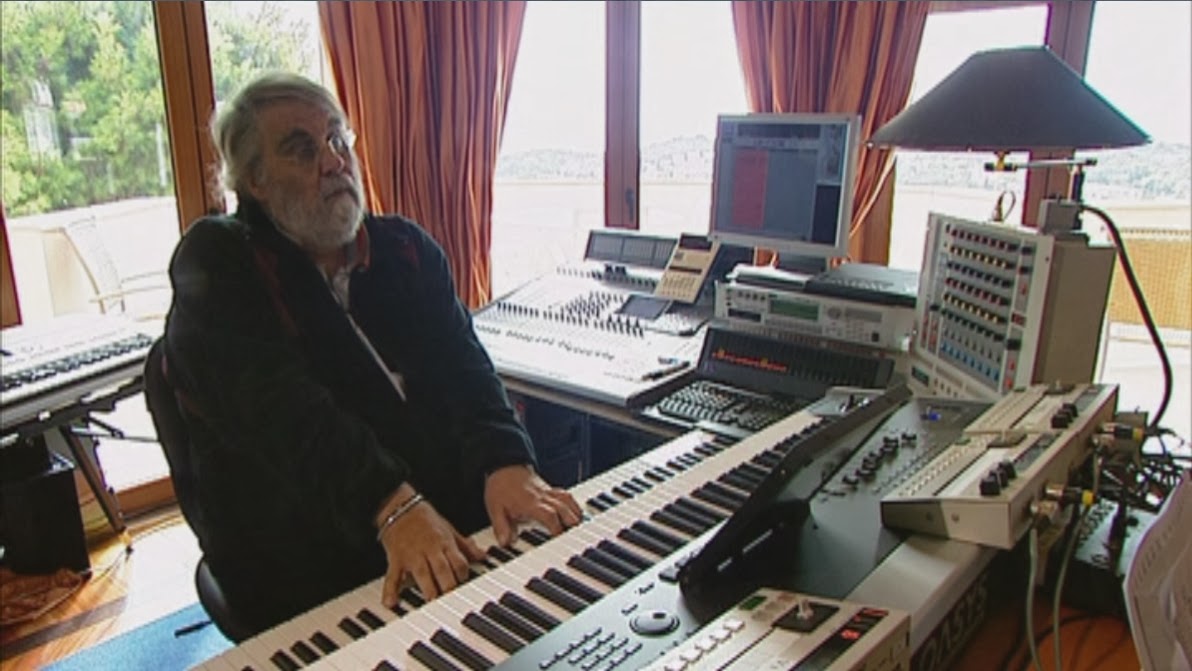
Since there was no further use for these machines anyway, none of the schematics or later code was retained, although Vangelis had copies of everything.
Here also lies the complication of what “Direct” actually did.
We’ll probably never completely know. Funny thing is that there was a lot of speculation and claims online about all sorts of far-fetched magical features, but while there is surely interesting stuff going on with sequences and arpeggios and some other cool stuff, the main thing about Direct was it’s user interface. One button or dial for one function only and no menu diving whatsoever.
The operating system that is was retained is an early development version 1.5 (and some earlier versions even) but the development of the software took quite a turn and nearly complete revision on the versions after that (with probably 2.0x being the latest). It’s unlikely these versions will ever turn up again.
I consider these machines important pieces in Vangelis history as they were quite instrumental in setting his direct methodology, so when I had the opportunity to obtain the broken machine, I jumped on it like a rabid dog on steroids.
As a friend put it: ” It’s like finding van Gogh’s paintbrushes”. They were also an integral part of a very prolific period in Vangelis’ career.
This particular device was used on The City and 1492 among many other unreleased recordings and many concerts from that era. This machine was the first and his ‘main’ one. It’s visible in the videos from that era, such as Musiques au Coeur from 1992, A few ET1 videos from 1990 and the Rotterdam Eureka concert.
There are a few tiny details on which you can determine if it’s the main machine or the secondary unit. The secondary unit has a mark above the memory protect switch on the front and some dials on the far right top have different colors (yellow and red on the main machine, red blue on the second).
It is my intention to visually restore it, but I can probably and hopefully go much further than that and give it life again running the older available software that remains. The upside is that these days retro computing is wildly popular and under the hood, this device, quite like Zyklus, is in essence based on Home Computer hardware. For example, a drop-in replacement CPU emulator that will allow you to include ROMS in its emulator as a binary file, is widely available, which is what I’m hoping to use to circumvent the battery backed RAM. A second benefit of this is that batteries are no longer needed on the main-board so risk of leaking and battery acid corrosion is gone.
It won’t be easy as it’s missing quite a few parts, which are likely – and hopefully – still in Vangelis’ estate or at least preserved somewhere:
– the breakout box with all the midi / audio connections
– the transposer unit.
Also, the case has some pretty nasty moisture paint damage and rust but nothing is structurally damaged.
If nothing else, it will be preserved as a museum piece, either somewhat working – or not.
Unlike the Zyklus MPS, which was a commercial product, Direct will not be cloned or open sourced.
I will restore it as far as I can possibly do. And I will blog about the restoration process.
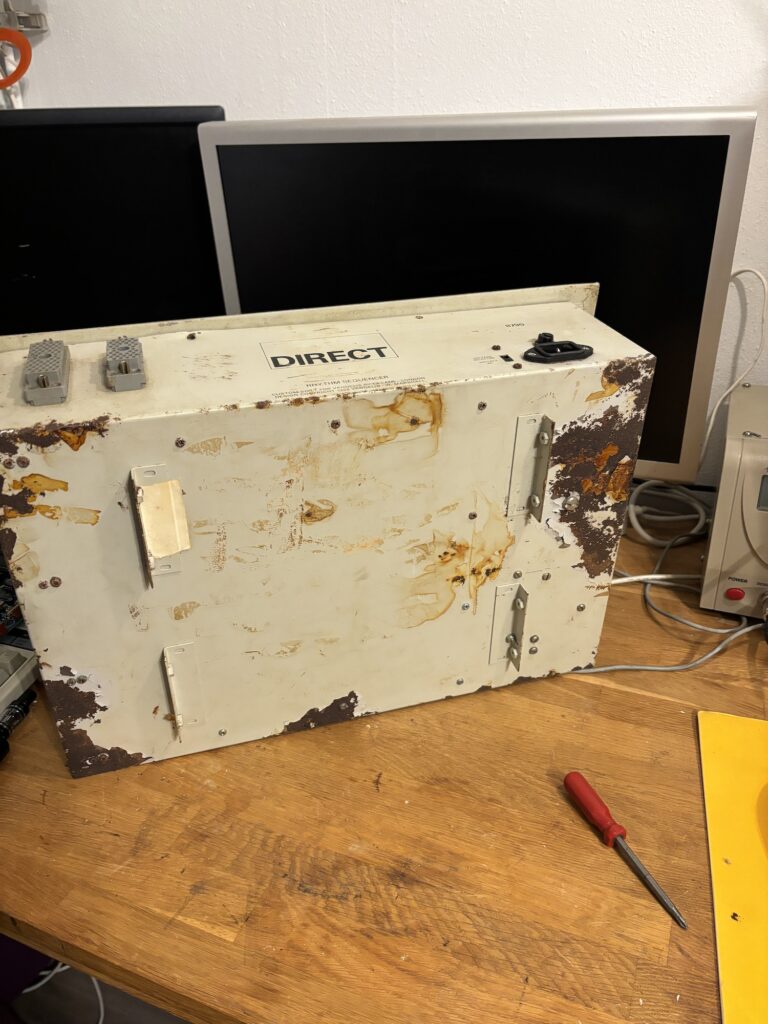
‘t is but a scratch…
Update on Jan 2025 -Restored and working:
The machine is fully working, and visually restored. It came out better than I could ever hope for.
- Outer case is de-rusted and partially repainted – left as much original as possible.
- New switch PCB created to replace moisture damaged PCB.
- Reparied, cleaned and restored the mainboard. It had some corrosion and defective components. Recapped.
- Repaired the powersupply.
- OS version is uploaded by means of newly created Memory card alternative using EPROM, but the old Melcards will be functional as well.
- A new MIDI breakout box created.
- Switches and rotary switch-caps replaced, but some originals are still good. I will probably re-use as much as practical.
- Small improvements in software and bootrom written – I will likely continue to expand on this as there are bugs and things I would like to add.
- A lot of documentation written.
- Learned a LOT about embedded hardware & software.
